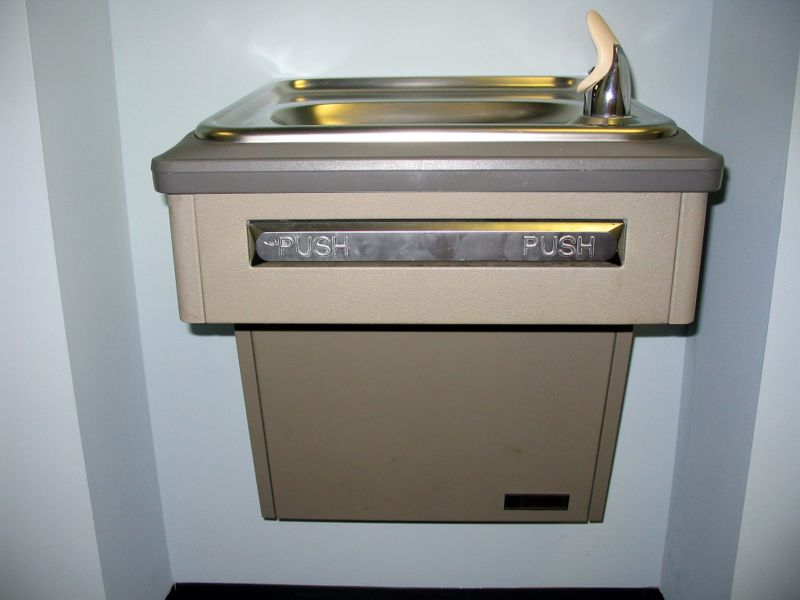 |
| http://bigfatboyfriend.com/?p=679 |
In Mrs. Galla's Chemistry class, students are busy determining levels of alkalinity, turbidity, and the pH of tap water vs. fountain water. Many students avoid drinking out of the faucet, and some even bring bottled water from home. But how different are they really?
While the tap water was found to be safe to drink, it's far from desirable. Turbidity measures the clairity of water. Tap water had a turbidity of 5 JTUs, while the water from the water fountain had a turbidity of 0 JTUs - meaning the filtering system does its job well. Turbidity affects alkalinity (the amount of alcohol in water) and conductivity (how well the water conducts electricity). Water is more conductive if there are more particles in it, and there is liable to be more alcohol is water with particles in it. So, what exactly does this all mean?
Prepare for an explanation with more scientific terms. Turbidity increases the acidity of water and raises its temperature. Although the acidity of tap water was only 7.5, which is a safe level, the filtered water was only 7 - which is neutral. The filtered water was an icy 54.6 degrees Fahrenheit but tap water was a tepid 74.6 degrees Fahrenheit. By removing the particles through the filter, the water's temperature decreases, its less conductive, its free from nitrate and iron oxide, and the alkalinity drops 40 ppm. The only thing that remains is the chlorine, which measured 20 ppm in both samples. These levels are safe since chlorine is not dangerous unless it exceeds 50 ppm.
You might be wondering if the water fountain water is the same as your pricey bottled water? According to mysafecleanwater.com - yes! Over 40% of bottled water comes from municipal water systems, meaning its about the same as the water out of your tap. The reality is, that as long as you are buying water bottled in the same state that you live in - the bottling company is exempt from FDA regulations on bottled water and can essentially just bottle your tap water. However, most bottled water companies purify their water with reverse osmosis or ultraviolet disinfection processes rather than adding chlorine, which most water utility companies will do because it's cheaper. Is that really worth the $1400 the average American spends on bottled water in a year? All scientific terms aside, the reality is that drinking the same amount in tap water would cost a mere forty-nine cents a year. Think about that.
Clarissa
Great Article!! Congratulations!
ReplyDeleteMs. Fosson
Thanks Clarissa. This report has saved me some money and that is always good. I was buying bottled water thinking is was safer than our water. Also, I don't have to worry about all the plastic bottles going into our landfills and harming our environment. Good reporting.
ReplyDelete